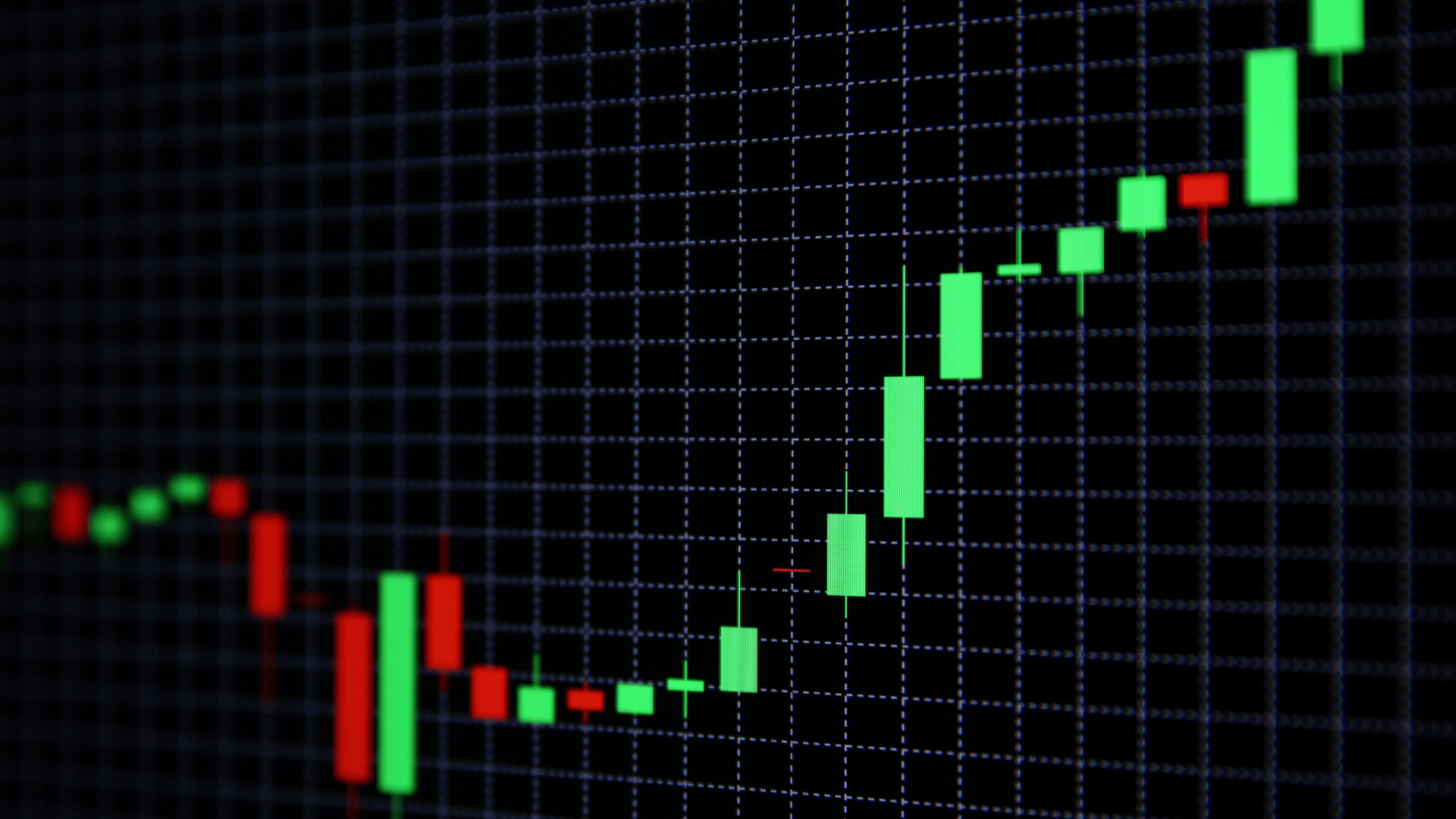- Macro Notes
- Posts
- No Cuts, No Calm, No Clarity
No Cuts, No Calm, No Clarity
Hello and welcome to Macro Notes, your go-to source for the latest macroeconomic trends, market-moving news, and key indicators to watch. We cut through the noise to bring you actionable insights in just a few minutes.

Stay Up to Speed on Macro News!
We now send our macro-focused news via text, so you’re never far from the latest market-moving action.

Timing Advantage (Sponsored)
A new investor report reveals 7 stocks with breakout potential in the next 30 days.
These picks come from a proven ranking system that has more than doubled the S&P 500’s return—posting +24.2% average annual gains.
Only the top 5% of stocks even qualify, and these 7 are rated the highest right now.
The opportunity window is closing fast.
Download the full list—free.
Access the “7 Best Stocks for the Next 30 Days” now.

The Big Picture
Crypto
Stablecoins, Blockchain, and Bitcoin Now Closer to Legal Grounding in the U.S.

Digital assets in the U.S. are one step closer to having a long-awaited regulatory framework.
Two landmark bills, the CLARITY Act and the GENIUS Act, cleared a major hurdle in the House after a marathon vote, setting the stage for clearer rules around Bitcoin, stablecoins, and blockchain innovation.
Under the CLARITY Act, digital assets will be formally classified as either commodities or securities, ending years of jurisdictional ambiguity between the SEC and CFTC.
This shift matters: it provides investors, platforms, and developers with a roadmap to operate without fear of arbitrary enforcement or sudden rule changes.
Alongside it, the GENIUS Act lays the foundation for stablecoin oversight while supporting blockchain technology as a pillar of U.S. competitiveness.
The legislation encourages innovation, incorporates privacy protections, and allows for the growth of decentralized finance tools within a regulated framework.
The bills’ progress represents more than a win for the crypto sector. It’s a signal that digital assets are maturing into a recognized part of the U.S. financial system.
Once passed into law, the measures are expected to impact capital markets, infrastructure investment, and the evolution of dollar-backed digital instruments in the years ahead.

Mining
America Sets a New Benchmark in the Battle for Critical Minerals

The United States is moving to reclaim control over the critical materials that power its economy.
In a direct challenge to China’s dominance in the rare earth market, the Department of Defense has introduced a U.S.-based pricing system that breaks from Beijing’s influence and sets a new global benchmark.
China currently accounts for approximately 90% of the global rare earth supply and dictates prices that are low enough to discourage overseas investment.
That grip may loosen. The U.S. will now guarantee a price of $110 per kilogram for key rare earths, nearly double current market levels, to ensure domestic production can scale.
Any producer that beats this threshold will share excess profits with the government, aligning long-term incentives.
The policy does more than back one company. It sets a floor for American industrial strategy.
By providing a predictable pricing mechanism, the U.S. is sending a strong signal to investors, manufacturers, and trading partners: strategic resources are no longer subject to foreign undercutting.
Automakers, wind turbine builders, and defense contractors will need to recalibrate for higher input costs, but the trade-off is supply security.
As demand for permanent magnets is forecast to double globally over the next decade, the U.S. aims to capture a larger share of that growth onshore.
Rather than chasing low prices, Washington is anchoring rare earth economics in national interest and reshaping global supply chains in the process.

Winning Stocks (Sponsored)
Some stocks don’t just rise — they explode.
A new report reveals 5 stocks with the potential to gain 100%+ in the next 12 months, backed by strong fundamentals and bullish technical signals.
Past picks from this team have soared +175%, +498%, even +673%.¹
This free report gives direct access to the names and tickers — no fluff, just high-upside plays.
Available free until midnight tonight.

Agriculture
Crop Losses Mount as Weather Shocks Shake U.S. Agriculture

Farmers across Texas are dealing with a volatile climate that’s upending seasonal patterns and throwing supply projections into uncertainty.
From hailstorms wiping out wheat to sudden droughts drying out replanted crops, inconsistent conditions are creating more than just logistical headaches.
Wheat fields in the Panhandle were particularly hard-hit this season. Hailstorms destroyed entire harvests in some regions, forcing growers to replant midseason.
While scattered rainfall initially helped summer crops, high winds rapidly depleted soil moisture, cutting short any gains.
With Texas ranking among the nation’s top ten wheat producers, local disruptions have national consequences.
The problem isn’t isolated. Agriculture in the U.S. and abroad is feeling the strain of weather whiplash.
Globally interconnected food systems now face a growing risk from climate volatility.
For the U.S. economy, the implications are clear. Crop failures drive up prices and tighten margins for farmers, increasing the risk of downstream food inflation.
With wheat prices already sensitive to global supply shifts, any prolonged disruption in key states like Texas may further strain grocery budgets and agricultural trade flows.
Unpredictable weather is no longer an anomaly as it’s a structural risk to agricultural output.
Stabilizing farm resilience may now become a policy priority not just for rural livelihoods, but for broader economic stability.

Metrics to Watch
Sticky Inflation: June CPI rose to 2.7% YoY and core inflation hit 2.9%, as tariff-driven goods inflation starts to seep into broader categories.
Flat PPI Reading: Producer prices stayed unchanged in June, adding to the mixed signals and reinforcing the Fed’s cautious tone on rate cuts.
Fed Pushback Builds: New York Fed President John Williams said keeping rates at 4.25–4.5% is “entirely appropriate” due to inflation risks from tariffs.
Bank CEOs Defend the Fed: Leaders from Goldman, JPMorgan, Citi, and BofA are pushing back against Trump’s public campaign to oust Powell, warning that Fed independence is vital for market stability.

AI Trade Shift (Sponsored)
As U.S.-China trade tensions rise, chip exports are being restricted—and big names like Nvidia could face major revenue hits.
But this disruption is creating space for U.S.-based AI companies with strong domestic operations and rapid revenue growth.
A new report reveals 9 under-the-radar AI stocks poised to benefit from this shift.
Download the full list today free for a limited time.

Market Movers
🏦 Wall Street Banks Ride Tariff Volatility
JPMorgan, Goldman Sachs, Morgan Stanley, and others crushed Q2 earnings, driven by double-digit growth in trading revenue.
Equities desks, in particular, thrived on the tariff-fueled chaos, with Goldman setting a new record for stock-trading income.
✈️ United Airlines Lifts on Earnings, Lowers Outlook
United (UAL) beat on Q2 profit but trimmed full-year guidance, citing tariff uncertainty and macro headwinds.
Shares dipped in after-hours, but the airline sees a “positive inflection” later this year.
💊 Johnson & Johnson Surges on Strong Q2 and Raised Guidance
JNJ jumped 6% after smashing earnings estimates and raising its full-year outlook, thanks to robust drug demand and medical device sales.
📉 ASML Tumbles on 2026 Growth Warning
Shares of chipmaking equipment giant ASML fell 8% after the company warned growth may stall next year.
Despite strong bookings and upbeat AI commentary, the company cited trade tensions and geopolitical instability for its cautious tone.
🚛 J.B. Hunt Flags Forecasting Challenges Amid Tariffs
The freight giant reported solid Q2 earnings but said clients are shifting sourcing strategies, pulling inventory forward, and bracing for longer-term trade disruptions, making forecasting demand a “very dynamic challenge.”

Market Impacts
Equities: Earnings season is off to a volatile but strong start. Big banks like JPMorgan, Goldman Sachs, and Morgan Stanley all reported better-than-expected results, fueled by tariff-fueled trading volatility.
Johnson & Johnson beat on both revenue and profit, raising its full-year outlook, while ASML’s warning of weaker 2026 sales dragged the tech sector despite robust Q2 bookings.
Investors are watching closely for signs that corporate America is adjusting to the new trade regime.
Bonds: Treasury yields dipped midweek as traders reacted to reports that Trump may attempt to fire Fed Chair Jerome Powell.
The 2-year yield fell 6 bps to 3.90%, reflecting expectations of sooner-than-expected rate cuts if the Fed’s independence is compromised.
That said, longer-dated yields remain elevated, with the 30-year holding above 5%, a sign that inflation and credibility risks are still top of mind.
Currencies: The dollar wobbled on rumors of Powell's firing, briefly falling before recovering as Trump denied he would act.
The DXY slid 0.4% on the day to 98.24, while the euro rose to $1.1648.
Traders remain skittish, and any serious threat to Fed autonomy could derail the dollar’s safe-haven appeal and accelerate de-dollarization narratives.
Commodities: Crude eased slightly with Brent at $68.52 and WTI at $66.38, weighed down by surprise builds in gasoline (+3.4M barrels) and distillates (+4.2M).
Demand softened unexpectedly after the July 4 holiday, but drone attacks in Iraqi Kurdistan and upbeat Chinese demand projections kept a floor under prices.
The market remains hypersensitive to trade-related macro uncertainty and geopolitical disruptions.

Gold Reclassified (Sponsored)
A quiet rule change just gave big banks the green light to treat one physical asset like cold, hard cash.
It’s not stocks. And it’s definitely not dollars.
One economist even called it “the only money banks trust.”
Meanwhile, most Americans are still stuck in risky paper assets.
But there’s a tax-free, penalty-free way to catch up—if you move fast.
Our FREE Wealth Protection Guide breaks it all down.

Key Indicators to Watch
📅 Housing Starts & Building Permits – Friday, July 18:
New residential construction is expected to tick up slightly in June. A continued rebound would suggest that elevated mortgage rates aren’t derailing homebuilding momentum — yet.📅 Consumer Sentiment (Prelim) – Friday, July 18:
All eyes on the Michigan sentiment gauge to see if inflation jitters and Powell drama are starting to erode consumer confidence. Expectations are for a modest rebound to 61.8.📅 Leading Economic Indicators – Monday, July 21:
June’s LEI reading is expected to show a slight decline. If confirmed, it would mark the 18th drop in the last 20 months — a signal that underlying growth momentum remains weak.

Everything Else
Japan’s retail sector just dodged a mega-deal after Couche-Tard pulled its $47 billion bid for Seven & i, halting trading and shaking confidence in cross-border M&A.
China’s AI, EV, and fintech ambitions are shifting into high gear.
Tariffs are beginning to show up in everyday business decisions, according to Wall Street CEOs who flagged changing consumer behavior in Q2.
Producer prices were flat in June, reinforcing the narrative that inflation isn’t spiraling, but it’s not cooling fast enough for the Fed to act.
Retail traders are back at it again, pumping a shorted pandemic-era stock as meme stock mania returns to the markets.

That’s it for today’s edition—thanks for reading! Reply to this email with any feedback or let me know which macro trends or markets you’d like me to cover next.
Best Regards,
—Noah Zelvis
Macro Notes



